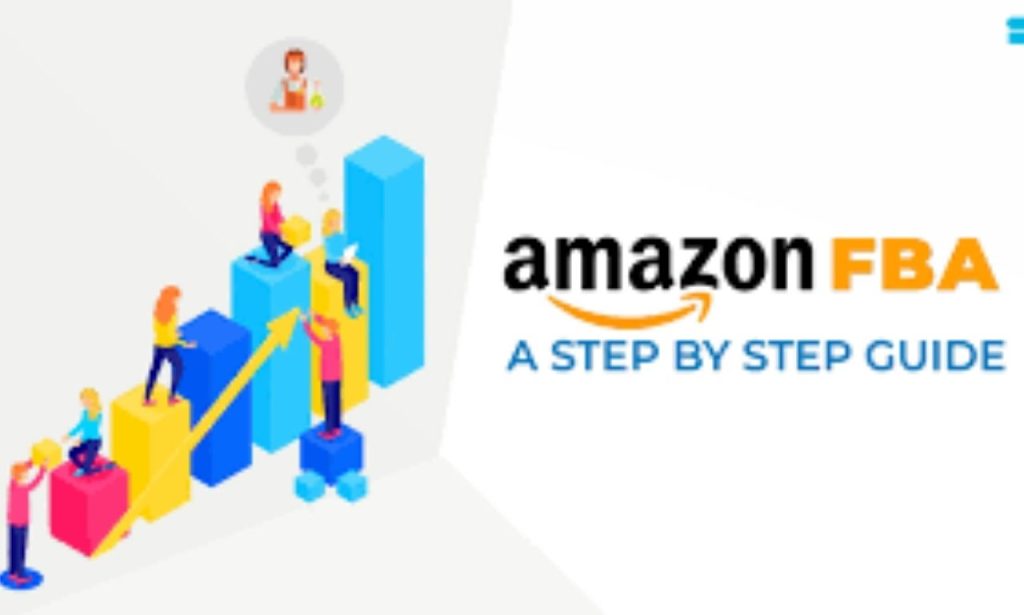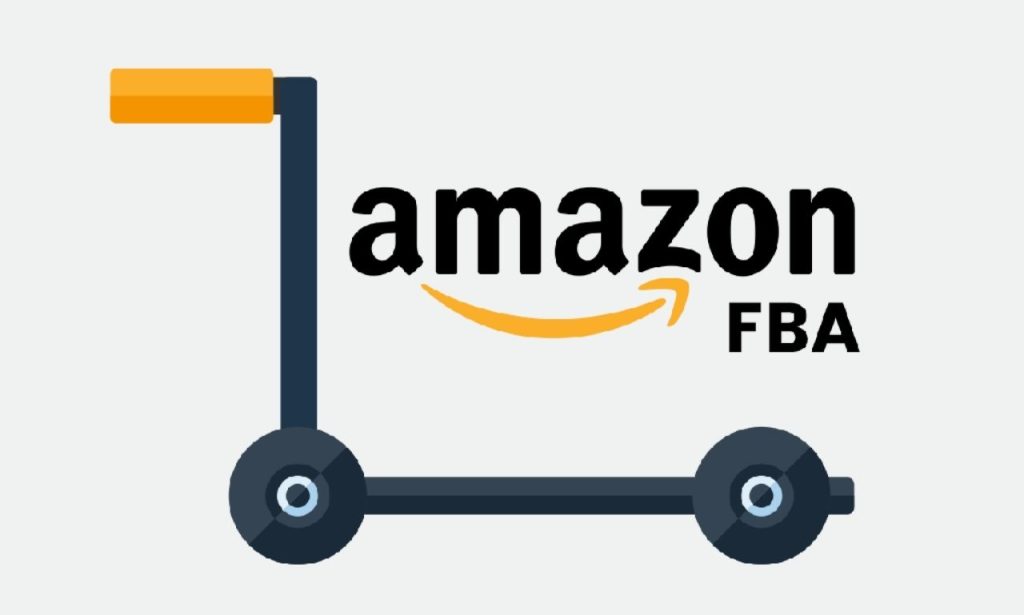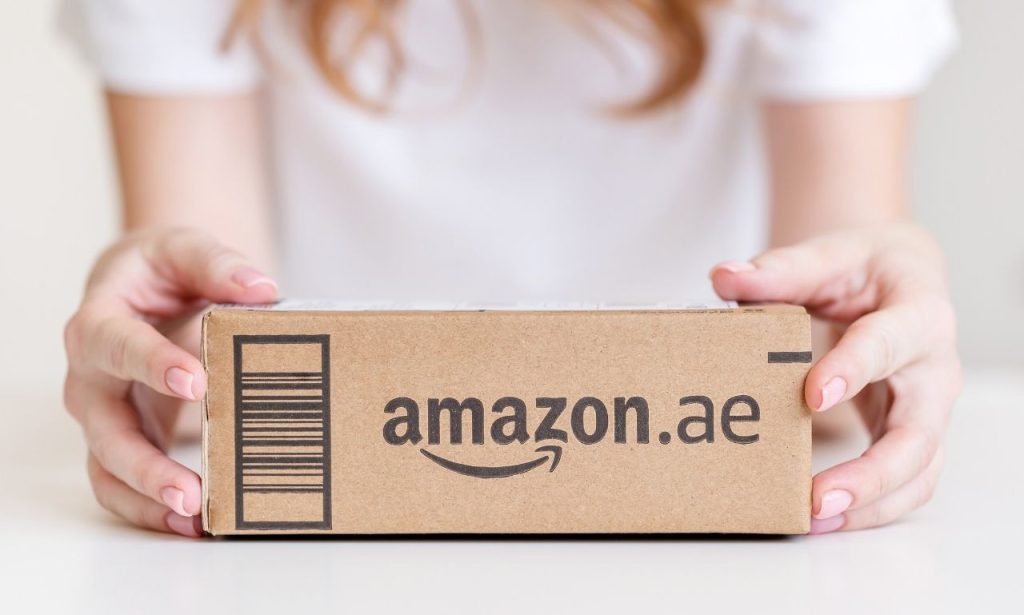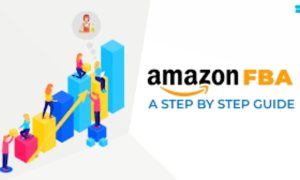Starting your own Amazon FBA business can be a life-changing venture. If you’ve ever considered taking control of your financial future and launching an ecommerce business, now is the perfect time. Nearly $1 out of every $2 spent online in the United States goes through Amazon, making it a dominant force in the ecommerce world. By leveraging the Fulfillment by Amazon (FBA) program, you can focus on sourcing and marketing profitable products while Amazon takes care of storage, shipping, and customer service.
In this comprehensive guide on how to start an Amazon FBA business, we’ll break down the process step by step. Whether you’re new to ecommerce or looking to optimize an existing setup, this guide will cover everything you need—from finding a profitable niche to building lasting customer relationships.
What is Amazon FBA?

Amazon FBA (Fulfillment by Amazon) is a fulfillment method that allows sellers to store their products in Amazon’s fulfillment centers. Amazon takes care of the logistics: packing, shipping, and even customer service for these products. Sellers get to benefit from Amazon’s powerful distribution network and customer trust.
When a customer purchases your product, Amazon will pick, pack, and ship it, making it an ideal business model for those who don’t want the burden of managing inventory or handling deliveries themselves.
The step-by-step guide below will help you get started with your Amazon FBA business.
Step 1: Find a Profitable Niche
Understand Market Demand
The first step in launching an Amazon FBA business is finding a niche that aligns with your interests and has enough demand to be profitable. A niche is essentially a targeted segment of a larger market—for instance, kitchen gadgets, pet supplies, or home decor.
To identify a niche, you need to consider products that are in high demand but not overly saturated. Keyword tools like Jungle Scout and Keyword Scout can help you find relevant keywords, search volume, and sales rank. Focus on potential products with a good combination of low competition and consistent sales volume.
Use Tools for Product Research
Product research is crucial because choosing the wrong product can make or break your Amazon FBA business. Tools like Jungle Scout, AMZScout, or Helium 10 are great for analyzing sales data, finding trending products, and determining competition levels. By using tools like the Product Database, you can find products with high demand and low competition. This step helps to ensure you choose a product that can generate consistent revenue.
Find Reliable Suppliers
Once you have identified a product idea, it’s time to source it. Alibaba is one of the most popular platforms for finding overseas suppliers. When using Alibaba, be sure to verify your supplier’s legitimacy by checking reviews and asking for certifications. Remember, working with reliable suppliers is crucial—your product quality and fulfillment timeline depend on it.
It’s best to contact at least ten potential suppliers to compare pricing, shipping cost, and quality before making your decision. You can also use a Supplier Database to locate reliable suppliers.
Step 2: Create Your Brand
Develop a Unique Brand Identity

Building a brand helps set you apart from competitors. Creating a logo and product packaging that represents your brand makes your product memorable to customers. You can hire designers on platforms like Fiverr or Upwork to help with creating a logo. Some suppliers even provide this service as part of your manufacturing process.
Amazon Brand Registry
Consider enrolling in Amazon Brand Registry if you have a unique brand. This program gives you access to tools that help you protect your brand and create a more trustworthy image for customers. To apply, you will need a registered trademark, so it’s best to apply for trademark registration as early as possible.
Step 3: Order Product Samples and Finalize Supplier Terms
Evaluate Product Samples
Once you’ve found a list of suppliers, order samples from them to evaluate the product quality. Pay attention to product dimensions, quality, packaging, and shipping times. The last thing you want is to receive bad quality products that might disappoint your customers.
Negotiate Terms
When negotiating with suppliers, keep in mind that almost everything is negotiable. Don’t hesitate to ask for better prices, lower minimum order quantities (MOQs), or shipping deals. Ensuring a favorable delivery quote will help you manage your business cost.
Choose a Fulfillment Method
Once you are satisfied with the product, finalize your terms with the supplier. You need to decide if you will ship the inventory directly to Amazon or if you want it sent to your location first. Shipping directly to Amazon is often the preferred choice to minimize costs and time.
Step 4: Set Up Your Amazon Seller Central Account
Choose Your Seller Account Type
To get started with Amazon FBA, you need to create an account on Amazon Seller Central. Amazon offers two types of accounts—Individual and Professional. If you plan to sell fewer than 40 items per month, an individual account is sufficient. For anyone planning on scaling their Amazon business, a professional account is the best choice.
UPC Codes and Product Listings
Each product you sell needs a UPC code. You can purchase these codes from sites like GS1 or third-party resellers (though third-party codes may violate Amazon’s terms of service).
Create product listings that attract customers by optimizing the product title, product description, and bullet points with relevant keywords. Keyword tools can help identify the most popular keywords to use.
Step 5: Create High-Quality Product Listings
Product Images
Your product images are one of the most critical components of your listing. Make sure to include multiple images showing different angles of the product, product packaging, and any product dimension details. Investing in a professional photographer can make a huge difference in conversion rates.
Product Title and Description
Your product title should include relevant information about your product, including brand, model, and keywords. The product description and bullet points should highlight the key features and benefits of the product. Use persuasive language to convey why your product is superior, and don’t forget to incorporate relevant keywords.
Step 6: Ship Inventory to Amazon Fulfillment Centers
Preparing for Shipment

Once your products are ready, work with your supplier to ship inventory to Amazon’s fulfillment centers. Make sure the packaging is compliant with Amazon’s guidelines to avoid unnecessary delays or extra costs.
If you’re working with an overseas supplier, you’ll need to decide whether to use FOB for delivery or another shipment term. With FOB, the supplier is responsible for transporting the goods to the port, and you’ll take over from there.
Labeling and Amazon Requirements
All units must be labeled with a unique identifier, like a barcode, that Amazon uses to track inventory. It’s essential to comply with all fulfillment network requirements to ensure smooth processing.
Step 7: Launch Your Product on Amazon
Product Launch Strategies
A well-planned launch can help you climb up in organic search rankings. Utilize Amazon’s pay-per-click (PPC) advertising to get visibility and drive initial sales. Set a daily budget that aligns with your reasonable budget, and use automatic campaigns initially to gather data.
Once you have some initial sales and data from your automatic campaign, create a manual campaign to target top-performing keywords more precisely. Utilizing Amazon’s tools like Amazon Vine can also help get initial product reviews.
Build Reviews and Social Proof
Getting product reviews early is crucial for gaining potential customers’ trust. Consider enrolling in Amazon Vine to get initial reviews. You can also ask friends, family, or even acquaintances to purchase and leave genuine reviews to boost your ranking.
Step 8: Drive Traffic and Marketing
Amazon PPC Advertising
Amazon PPC allows you to pay for sponsored ads to promote your product. Start by creating keyword campaigns using a mix of broad, phrase, and exact match keywords. A tool like Keyword Scout can help identify high search volume keywords for your campaigns. Adjust your keyword bid as necessary to ensure a good ad position.
Email Marketing and Social Media
Email marketing is a powerful tool for generating repeat sales. Use a follow-up email sequence to encourage customers to leave a review or explore other products from your brand. You can also promote your product on social media channels like Instagram, Pinterest, and TikTok to attract potential customers.
Step 9: Manage Inventory and Optimize Listings
Inventory Management
Proper inventory management is essential for keeping your Amazon FBA business running smoothly. Keeping track of your inventory levels can help prevent stockouts or overstocking, both of which can harm your profit margin. Tools like RestockPro can help automate this process.
Amazon also provides reports within Amazon Seller Central that give insight into your inventory. Use these reports to track sales, optimize inventory levels, and plan for restocking. Staying on top of your fulfillment cost and fulfillment fees is also crucial to maintain profitability.
Conversion Rate Optimization
Once your product is live, optimizing the listing for conversions becomes a priority. Make use of data from Amazon PPC, customer inquiries, and customer feedback to refine your listings. Make sure your pricing is competitive, but still profitable after considering all Amazon fees.
Adding high-quality product images, adjusting the product title to include additional relevant keywords, and ensuring your listing appeals to your target audience are great ways to boost your conversion rates.
Step 10: Business Growth and Expansion
Scaling Your Product Line
After launching your first product successfully, consider expanding your product line within the same niche. This will increase your revenue potential and brand authority, giving you more exposure across multiple product categories.
Subscribe & Save and Amazon Programs
Consider enrolling your products in Amazon’s Subscribe & Save program, which allows customers to receive regular deliveries at a discounted price. Programs like Amazon Business can also help you reach business customers who might be interested in purchasing products in bulk.
Conclusion
Starting an Amazon FBA business requires dedication, patience, and the right strategy. By following this step-by-step guide, you can set yourself up for success in the ecommerce world. Remember that the key to growth is finding the right products, creating a solid brand, optimizing your listings, and managing your inventory effectively.
Amazon provides an incredible opportunity for entrepreneurs to reach a massive audience without dealing with logistics. With the right approach, you can build a sustainable, profitable Amazon FBA business that will keep growing over time.
Also Read: $1 Million in Revenue on Amazon with Zero Employees
FAQs
The startup costs vary, but you can expect to spend between $1,000 to $3,000 initially. This includes product cost, shipping, and Amazon fees.
Yes, Amazon FBA is still a profitable business model. The key is finding profitable products with low competition and optimizing your listings effectively.
Fulfillment fees are the costs that Amazon charges for picking, packing, and shipping your products. Fees vary based on product dimension and weight.
Use tools like Keyword Scout, Jungle Scout, or Helium 10 to find relevant keywords with high search volume. Incorporate these keywords in your product title, bullet points, and description.
The Amazon Brand Registry is a program that allows you to register your brand with Amazon. This gives you access to advanced tools to protect and promote your brand, including enhanced product content and reporting features.





